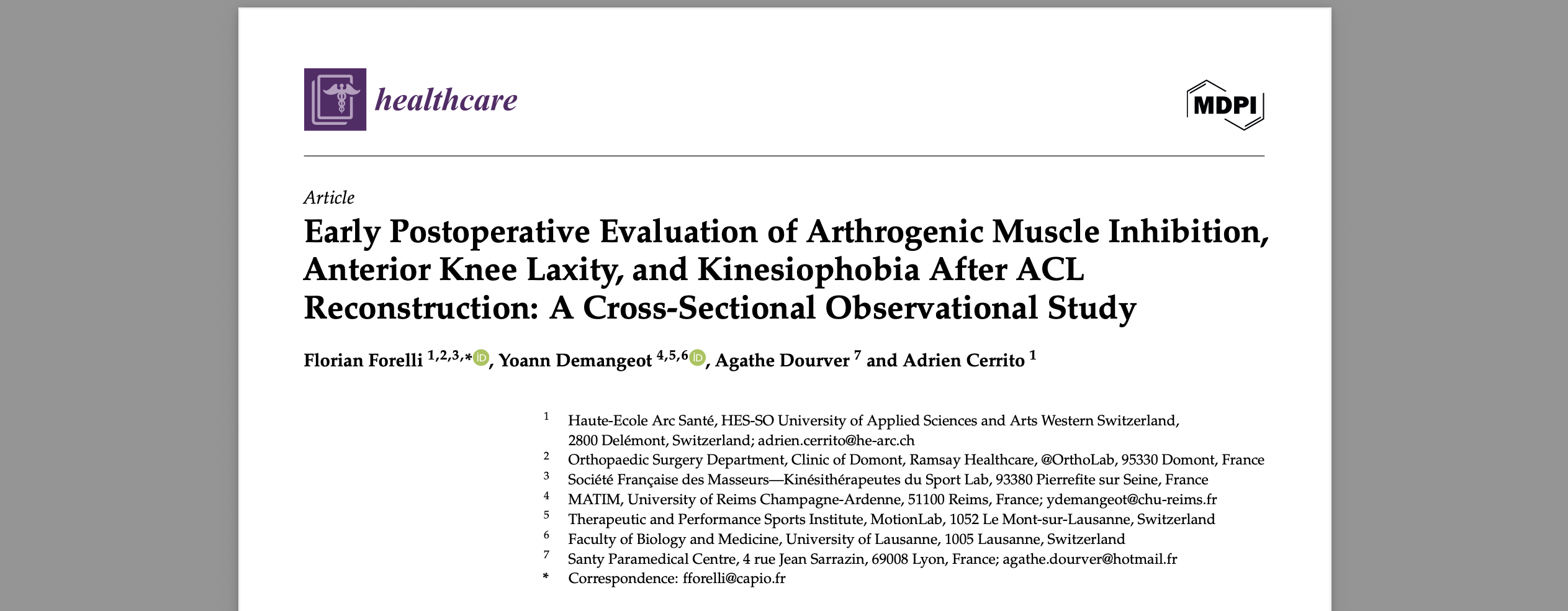Introduction
Anterior Cruciate Ligament (ACL) injuries are among the most common and impactful sports related injuries, significantly affecting athletes in various sports. The ACL, crucial for knee stability and movement, is particularly vulnerable to injury in high-intensity sports. The prevalence of ACL injuries has put a spotlight on the need for accurate diagnosis, effective treatment, and preventive measures in sports medicine.
In our exploration of the sports related ACL injuries, it’s essential to understand both the nature of these injuries and the advancements in their management. Here, state-of-the-art diagnostic tools like the GNRB® and DYNEELAX® arthrometers play a pivotal role. These devices provide precise and reliable assessments of knee ligament condition, crucial for diagnosing ACL injuries and monitoring recovery. While focusing on sports that pose a higher risk of ACL injuries, we will also shed light on how tools like the GNRB and Dyneelax arthrometers contribute significantly to our understanding and management of these injuries.
This article aims to deliver a comprehensive overview of ACL injuries in the sports arena, catering to both medical professionals and patients. As we delve into the sports most frequently linked to these injuries, we will not only explore prevention and treatment strategies but also reference scientific reviews to enrich our discussion. This inclusion ensures that our insights are grounded in the latest research and findings in the field. Additionally, we will emphasize the importance of advanced diagnostic tools in enhancing patient care. Our goal is to provide practical insights and expert perspectives, ensuring readers are well-informed about ACL injuries in sports and the evolving role of technology in sports medicine, backed by scientific evidence and reviews.
1. The Fundamentals of ACL Injuries in Sports
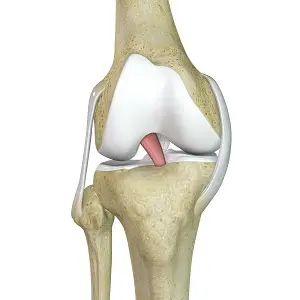
The Anterior Cruciate Ligament (ACL) is a key ligament in the knee joint, playing an essential role in maintaining knee stability and facilitating smooth joint movements. This ligament connects the thigh bone (femur) to the shin bone (tibia), helping to control the back-and-forth motion of the knee. In sports, the ACL is crucial for actions that involve sudden stops, changes in direction, and jumping.
ACL injuries often occur in sports settings due to these high-stress movements. Common mechanisms include rapidly changing direction (as seen in basketball or soccer), landing awkwardly from a jump (common in volleyball and basketball), or direct collision (like in football). These movements can lead to the ACL being overstretched or torn, resulting in a significant injury.
The symptoms of an ACL injury typically include a popping sensation in the knee, severe pain, swelling, reduced range of motion, and a feeling of instability in the knee joint. Athletes might find it difficult to continue playing and may notice the knee giving way when trying to stand or walk.
Diagnosing an ACL injury involves a physical examination, patient history, and often imaging tests like MRI. However, the precision in diagnosis can be markedly enhanced with the use of specialized equipment. Arthrometers like the GNRB® and DYNEELAX® play a vital role in this aspect. These advanced tools precisely measure the knee’s laxity (looseness or tightness), allowing for a more accurate assessment of the ligament’s integrity. This level of detail is crucial not just for confirming an ACL injury but also for planning the appropriate treatment and rehabilitation.
Accurate diagnosis is critical because it influences the entire course of treatment and recovery. A misdiagnosis or delayed diagnosis can lead to improper treatment, prolonged recovery, or even permanent knee damage. Hence, the role of accurate, advanced diagnostic tools like the GNRB® and DYNEELAX® arthrometers cannot be overstated in the context of sports medicine and ACL injury management.
2. High-Risk Sports Related ACL Injuries and Prevention Strategies
2.1 American Football
American Football is particularly notorious for its high incidence of ACL injuries. The sport inherently demands intense physical exertion, a combination of physical contact, rapid directional changes, and frequent jumping, which significantly heightens the risk of knee injuries, particularly to the ACL.
In football, the intense physical contact is a major contributor. Players often experience tackles and collisions that can lead to direct impacts on the knee, or put the knee in positions where the ligament is highly vulnerable. The very nature of these physical interactions is a crucial element in understanding the prevalence of ACL injuries in football.
Moreover, the sport’s requirement for rapid directional changes is another critical factor. Actions such as sudden turns, dodges, and quick pivots are commonplace and necessary in football. These movements, particularly when executed with the foot firmly planted and the knee bent, place considerable strain on the knee ligaments, including the ACL. This constant demand for agility and speed, under the stress of potential contact, makes ACL injuries a significant concern for football players.
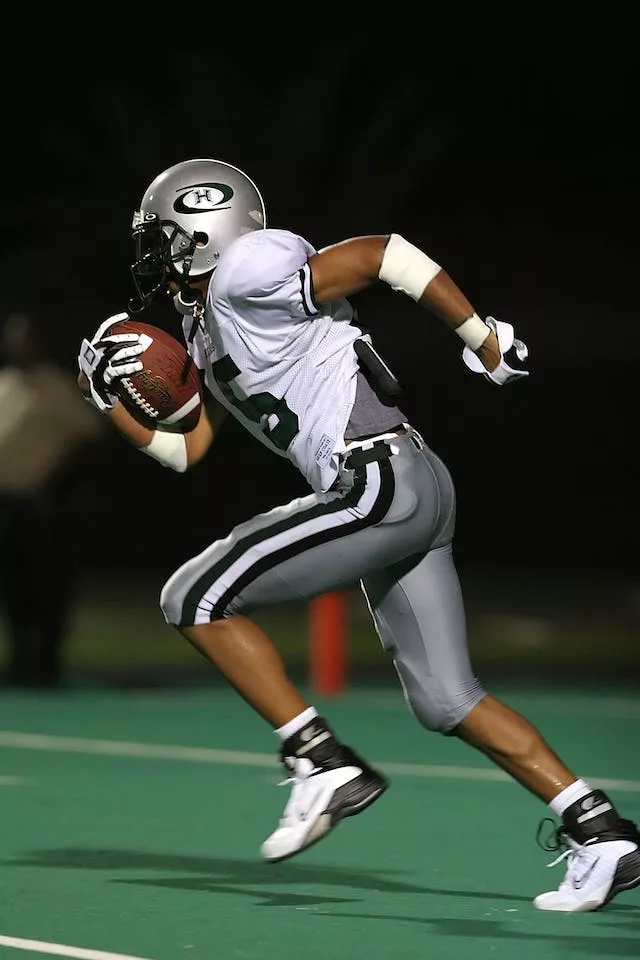
2.2 Basketball
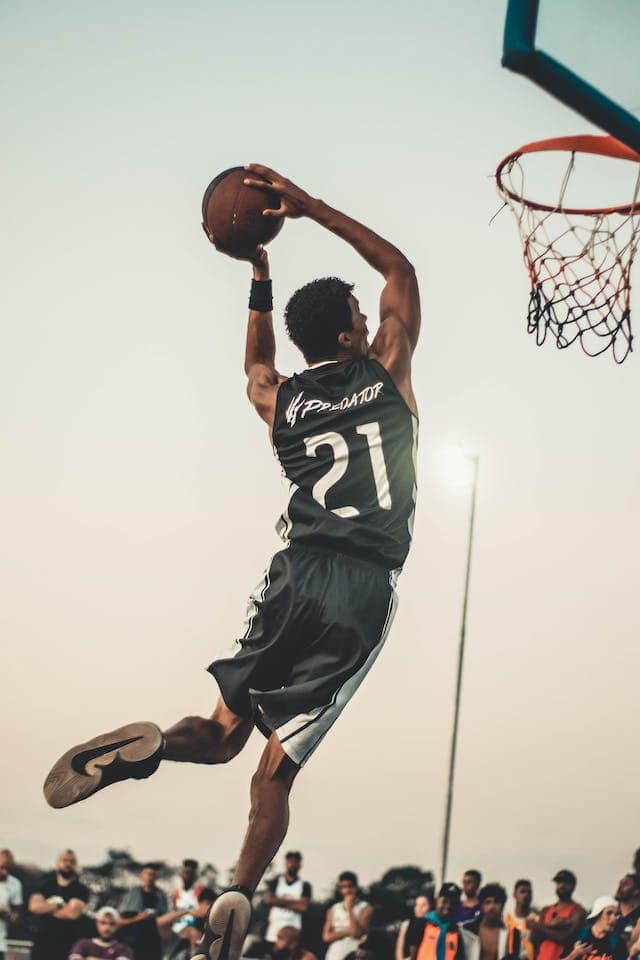
Basketball is another sport where a high rate of ACL injuries is observed, mainly attributed to the sport’s characteristic explosive movements, sudden stops, and quick directional changes. These dynamic and high-impact actions are integral to the game but also place significant stress on the knee joints, particularly the ACL.
The aspect of jumping and landing mechanics is especially crucial in basketball. These movements, fundamental to shooting, rebounding, and defensive plays, involve a complex coordination of speed, power, and precision. The repetitive nature and the intensity of these jumps and landings can exert substantial strain on the ACL, making it susceptible to injury.
To address these challenges, basketball players can benefit from plyometric exercises. These exercises are designed to enhance leg strength and agility, providing better support and stability to the knee during these high-intensity movements. Moreover, the importance of appropriate footwear cannot be overstated. Shoes that offer good support and grip are essential in reducing the risk of slips and awkward landings, which are common causes of ACL injuries in basketball.
2.3 Skiing
Skiing is widely recognized for its association with ACL injuries, attributed to the sport’s unique mix of high speeds, forceful landings from jumps, and the potential for awkward falls. These factors are inherent in skiing but also significantly heighten the risks to the knee’s ligaments, particularly the ACL.
The high velocities achieved in skiing exert considerable stress on the knee joints, especially during rapid maneuvers or quick direction changes. This risk is compounded by the impact force experienced during landings after jumps, which can be severe and directly impact the knee’s stability.
Furthermore, the nature of skiing means that falls are often inevitable and can occur in an awkward or uncontrolled manner. Such falls can place the knees in positions that greatly increase the risk of ligament damage, particularly to the ACL. The likelihood of such injuries is further heightened by the unpredictable terrain and environmental conditions typical in skiing.

2.4 Football

Football is a sport with a significant incidence of ACL injuries, primarily due to the nature of the game which involves rapid directional changes, jumping, and physical contact. These elements are fundamental to football but also contribute to the higher likelihood of knee injuries.
In football, rapid directional changes are a constant requirement, as players frequently pivot, turn, and change direction to control the ball or evade opponents. These abrupt movements can place a substantial strain on the knees, making the ligaments, especially the ACL, prone to injury.
Moreover, the action of jumping, whether for heading the ball or contesting aerial duels, adds to the risk. The impact of landing, coupled with the need to rapidly move again, can challenge the knee’s stability. Additionally, physical contact, which is often unavoidable in soccer, whether from tackles or collisions, can directly or indirectly lead to knee injuries.
2.5 Tennis
Tennis is a sport where the risk of ACL injuries is notable, primarily due to its characteristic quick lateral movements and sudden stops. While not as high-impact as some contact sports, the unique demands of tennis significantly contribute to the stress on knee ligaments.
In tennis, players engage in constant quick lateral movements, swiftly moving side to side to return volleys and serves. This type of movement places significant strain on the knees, as it requires rapid changes in direction and speed. The ACL, being critical for stabilizing the knee during these movements, is particularly at risk.

Additionally, the sudden stops and starts in tennis are demanding on the knee joints. Players often have to quickly halt their motion to change direction or prepare for a shot, which can exert considerable force on the ACL. This repeated stress during matches and practice sessions contributes to the higher likelihood of ACL injuries among tennis players.
2.6 gymnastics
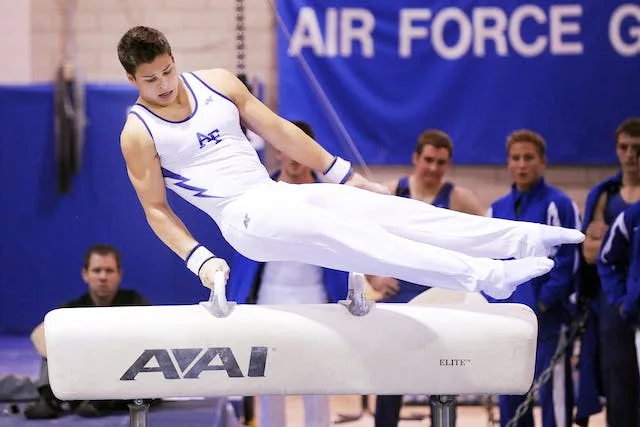
Gymnastics sees a considerable risk of ACL injuries, primarily due to its demands for extreme flexibility and explosive power. These elements, essential to gymnastics, significantly heighten the stress on an athlete’s knee joints, particularly the ACL.
The nature of gymnastics requires athletes to perform a variety of high-impact movements, including jumps, flips, and complex tumbling sequences. These activities demand not just precision but also immense strength and power, often leading to intense pressure on the knees during landings and take-offs. Such repetitive high-impact actions place the ACL at a heightened risk of injury.
Moreover, gymnastics often involves extreme ranges of motion, with athletes pushing their joints, including their knees, to the limits of flexibility. This can lead to situations where the ACL is stretched beyond its normal capacity, increasing the likelihood of strains or tears. The combination of high-intensity movements and flexibility demands makes gymnastics a sport with a significant predisposition to ACL injuries.
2.7 Volleyball
Volleyball is also a sport where the incidence of ACL injuries is notably high, largely due to the nature of the game which involves frequent jumping and landing, as well as rapid directional changes. These core elements of volleyball contribute significantly to the stress on knee ligaments, particularly the ACL.
In volleyball, players are constantly involved in jumping for spikes, blocks, and serves. This repetitive action, especially the force of landing, places considerable strain on the knees. The impact associated with these landings, coupled with the need for quick subsequent movements, challenges the knee’s stability, making the ACL susceptible to injuries.
Additionally, volleyball requires players to make quick directional changes during play. The swift movements needed to reach the ball or transition from offense to defense can exert significant stress on the knee joints. The combination of these high-impact and dynamic movements in volleyball makes it a sport with a heightened risk of ACL injuries.
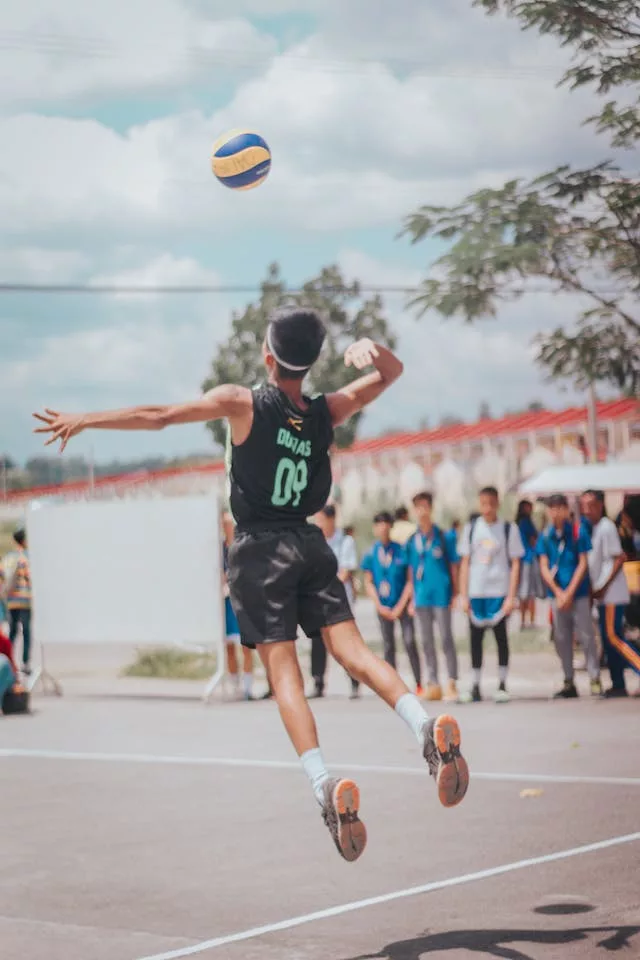
2.8 Rugby

Rugby presents a significant risk of ACL injuries due to its intense physical nature, involving heavy tackles, rapid directional changes, and frequent collisions. These intrinsic aspects of rugby contribute notably to the strain and stress on knee ligaments.
In rugby, the physicality of tackles and collisions is a primary factor for knee injuries. The impact from these encounters can lead directly to significant stress on the knee joint, placing the ACL in a vulnerable position for potential injury. This risk is compounded during rucks, scrums, and mauls where the knees can be subjected to unusual angles and forces.
Moreover, the game demands quick, agile movements as players dodge opponents or change direction rapidly with the ball. These abrupt and dynamic actions place additional strain on the knees, especially the ligaments. Given the high-impact nature and the frequent physical contact in rugby, the sport is inherently prone to higher instances of ACL injuries.
2.9 Track and Field
Track and Field encompasses a variety of events, some of which carry a notable risk of ACL injuries. Particularly in events like hurdling and long jump, athletes are exposed to activities that involve quick bursts of speed and jumping, which can strain the ACL.
In events such as hurdling, athletes must combine speed with precision jumping and landing. The rapid acceleration followed by the impact of landing after clearing each hurdle places considerable stress on the knees. This is especially true for the ACL, which is integral in stabilizing the knee during these quick, repetitive motions.
Similarly, in the long jump, the athlete’s intense sprint, followed by a forceful leap into the sandpit, involves a significant amount of stress on the knee joints. The combination of high-speed running and the explosive power required for the jump, along with the impact of landing, can be particularly challenging for the ACL. Such repetitive high-impact actions in these track and field events make them activities with an elevated risk of ACL injuries.
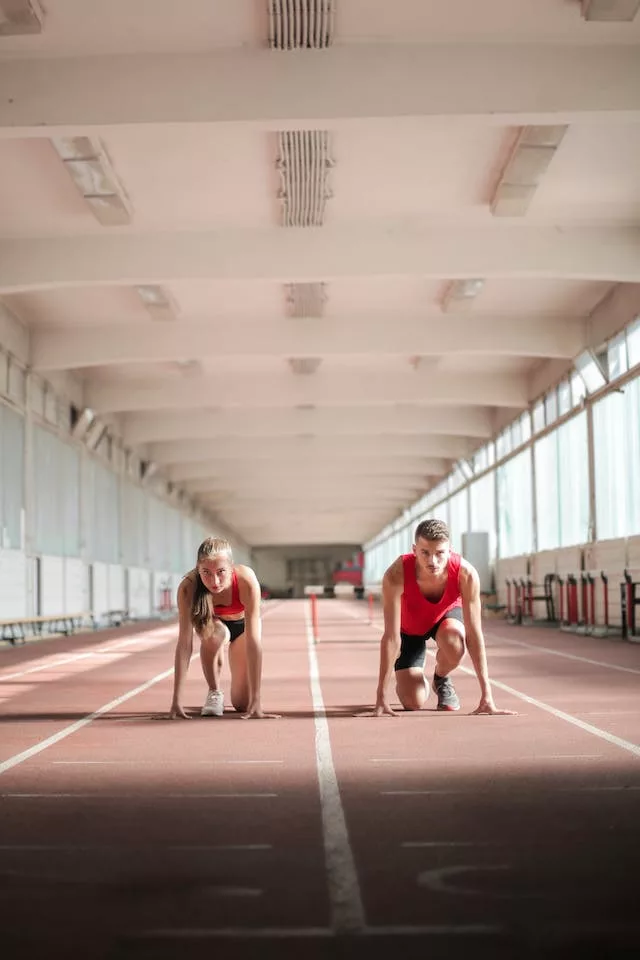
2.10 Baseball
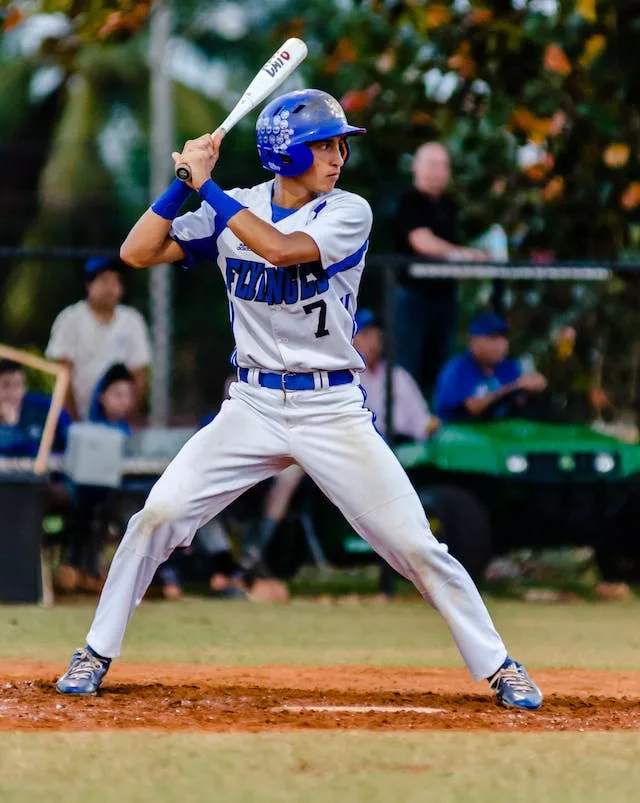
Baseball, while not typically associated with the same level of physical contact as sports like football or rugby, still poses a risk for ACL injuries. It is a sport where ACL injuries can occur, primarily due to activities like sudden sprints, aggressive base running, and quick lateral movements. While not as continuous in action as some other sports, the specific motions in baseball can contribute to stress on the knee ligaments, including the ACL.
In baseball, players often engage in sudden sprints, for instance, when running to bases or chasing a ball. These quick bursts of speed can sometimes lead to abrupt stops or changes in direction, placing strain on the knee joints. The ACL, essential for knee stability during these rapid movements, can be susceptible to injury in these scenarios.
Additionally, the action of swinging the bat or fielding can also involve twisting or lateral movements that put stress on the knees. Players pivoting or making sudden lateral moves to catch or throw the ball can experience knee strain. This risk is further compounded in situations where players may have to quickly change direction or adjust their stance, making baseball a sport with a potential, albeit less frequent, risk of ACL injuries.
2.11 Ice & Field Hockey
Hockey, both ice and field variants, presents a notable risk for ACL injuries. This risk is primarily due to the sport’s demands for rapid directional changes, sudden stops, and the potential for physical collisions. These aspects, inherent in hockey, significantly contribute to the stress on knee ligaments.
In ice hockey, the high speeds achieved on the ice add to the risk factor. Players often execute quick turns and stops, which can place substantial strain on the knees. The slick nature of the ice surface also means that players are more susceptible to slips and falls, which can result in awkward positions and increased stress on the ACL.

Field hockey also has its set of challenges. The requirement for agile movements and quick sprints, often on uneven turf, can be demanding on the knees. Players need to constantly change direction, dodge opponents, and make rapid stops, all of which can exert significant pressure on the knee joints, particularly the ACL.
Moreover, the potential for collisions in hockey, whether accidental or as part of the game, can lead to direct impacts on the knee, heightening the risk of ACL injuries. Given the dynamic and physically demanding nature of hockey, it is a sport with a considerable predisposition to such injuries.
2.12 Lacrosse

Lacrosse is a sport with a significant incidence of ACL injuries, mainly due to its fast-paced nature involving rapid sprints, sharp turns, and physical contact. These elements are integral to lacrosse but also contribute to the heightened risk of knee injuries.
Players in lacrosse often engage in rapid sprints as they move quickly across the field, either chasing the ball or positioning themselves strategically. These high-speed movements, coupled with the need for sudden stops and sharp turns, place considerable stress on the knees. The ACL, which is crucial for knee stability during these agile maneuvers, becomes particularly vulnerable to strain and injury in such scenarios.
Additionally, lacrosse involves a fair amount of physical contact, whether through body checks or stick checks. These physical aspects of the game can lead to direct impacts on the knee or situations where the knee is twisted or bent unnaturally, increasing the likelihood of ACL injuries.
2.13 Cricket
Cricket, while not as continuously high-impact as some other sports, still carries a risk of ACL injuries. This is primarily due to the sport’s specific movements like quick sprints, sudden stops, and agile fielding maneuvers.
In cricket, players, especially batsmen and fielders, are involved in quick sprints, either while running between the wickets or chasing the ball in the field. These sudden bursts of speed, followed by rapid deceleration for stops or turns, can place significant strain on the knees. The ACL, essential for stabilizing the knee during these rapid movements, is particularly susceptible to injury in these situations.
Furthermore, the action of bowling in cricket can also be demanding on the knees. The bowler’s delivery stride, which often involves a complex coordination of speed and torsion, can exert stress on the knee joints, particularly the ACL. This is compounded by the repetitive nature of bowling, where consistent stress on the knee can lead to increased risk of ligament injuries.

2.14 And many other sports...
We’ve covered a wide range of sports where ACL injuries are relatively more common. However, it’s important to note that ACL injuries can potentially occur in almost any sport, especially those involving rapid changes in direction, jumping, or physical contact. Here are a few more sports where there is a potential, though perhaps less common, risk of ACL injuries:
Ultimate Frisbee: This sport requires quick changes in direction and jumping, similar to basketball and soccer, which can put strain on the knees.
Squash and Racquetball: These indoor racket sports involve rapid multidirectional movements and quick stops that can pose a risk to the ACL.
Water Skiing and Wakeboarding: The pull of the boat and the impact of hitting the water can sometimes result in knee injuries, including damage to the ACL.
Rollerblading and Skateboarding: These activities involve jumps and tricks that can put stress on the knees, though protective gear can help mitigate the risk.
Horseback Riding: Falling off a horse or the motion of riding can sometimes lead to knee injuries, including ACL tears.
Motorsports: While less common, motorsport athletes can suffer ACL injuries during high-speed accidents.
Cheerleading: Involving jumps, flips, and complex stunts, cheerleading can pose a significant risk to knee stability. Focusing on strength training, particularly in the lower body, and ensuring proper technique during stunts can help prevent ACL injuries.
Martial Arts: Sports like judo, karate, and taekwondo involve quick movements and potential for awkward landings, which can lead to ACL stress. Flexibility training, along with learning proper fall techniques, is key to prevention.
Dance: Dance, particularly ballet and modern dance, involves jumps and rapid leg movements that can strain the knee. Dancers should focus on strengthening and flexibility exercises for the lower body.
Snowboarding: Similar to skiing, the sport’s jumps and potential for falls can be hard on the knees. Using well-fitted equipment and practicing safe landing techniques are preventative measures for snowboarders.
2.15 Preventive Strategies
Preventative measures across these sports share common themes: strength training, flexibility exercises, and proper technique training. Focusing on strengthening the muscles around the knee, such as the quadriceps and hamstrings, can provide better support and stability for the joint. Flexibility exercises help maintain a full range of motion, reducing the likelihood of injury during sudden movements.
Training tips for reducing the risk of ACL injuries include:
- Proper warm-up routines: A good warm-up increases blood flow to the muscles and prepares the joints for physical activity.
- Technique training: Learning and practicing the correct techniques, especially for jumping and landing, is crucial in sports like basketball and football.
- Balance and proprioception exercises: These exercises enhance the body’s ability to sense and maintain its position, crucial for sports involving dynamic movements.
- Plyometric training: This involves explosive movements that improve muscular power, essential for sports requiring sudden bursts of speed or jumping.
Incorporating these strategies into regular training can significantly reduce the risk of sustaining an ACL injury. Coaches and trainers play a vital role in educating athletes about these prevention techniques and ensuring they are a standard part of training regimens.
3. Treatment and Rehabilitation of ACL Injuries
ACL injuries, prevalent in a variety of sports, require a nuanced approach to treatment and rehabilitation, with options ranging from non-surgical to surgical interventions. The choice of treatment depends on multiple factors, including the severity of the injury, the patient’s age, activity level, and specific sports involvement.
3.1 Non-Surgical Treatment
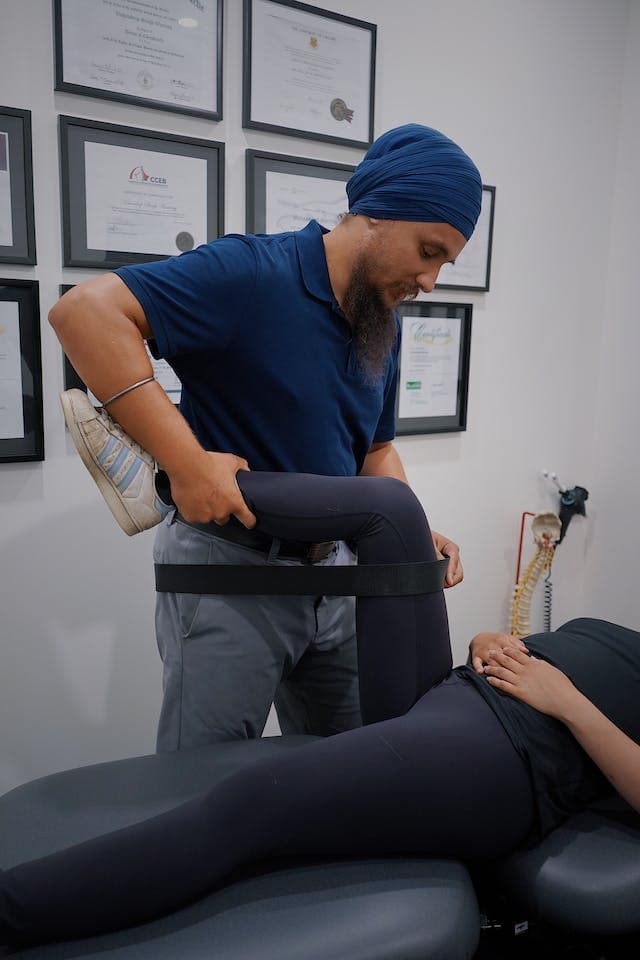
For less severe ACL injuries, particularly partial tears or in cases where the patient’s lifestyle does not involve high-demand sports, non-surgical treatment may be sufficient. This approach typically involves a combination of physical therapy, bracing, and lifestyle modifications. Physical therapy focuses on restoring knee mobility and strength through a tailored exercise regimen, while bracing helps to stabilize the knee during the healing process. Lifestyle modifications may include reducing activities that put stress on the knee or adapting sports techniques to prevent further injury.
3.2 Surgical Treatment
In cases of complete ACL tears or when the patient is an athlete or highly active individual, surgical reconstruction of the ligament is often recommended. The surgery involves replacing the torn ligament with a graft, typically taken from the patient’s own body (autograft) or from a donor (allograft). Post-surgery, the knee undergoes a period of healing followed by rehabilitation.
3.3 Role of Rehabilitation
Rehabilitation plays a crucial role in both non-surgical and post-surgical recovery. The primary goals of rehabilitation are to regain knee strength, flexibility, and function, and to reduce the risk of re-injury. A comprehensive rehab program includes exercises to improve range of motion, strength training for the muscles around the knee, and balance and proprioception exercises. Rehabilitation is a gradual process, often taking several months, with the duration and intensity of the rehab tailored to the individual’s specific needs and progress.
3.4 Utilization of GNRB and Dyneelax Arthrometers
In the context of Rehabilitation, tools like the GNRB® and DYNEELAX® arthrometers play a pivotal role in monitoring recovery progress. These sophisticated instruments offer precise measurements of knee laxity and stability, providing valuable data on the functional status of the ACL and surrounding structures. This information can be instrumental in guiding the rehabilitation process, helping clinicians to tailor and adjust the therapy regime based on objective measurements. Regular assessments with these arthrometers can also aid in determining when an athlete is ready to safely return to sport, ensuring that the knee has regained sufficient stability and strength.

Furthermore, the journey from ACL injury to full recovery involves a well-considered blend of treatment and rehabilitation strategies. The use of advanced diagnostic and monitoring tools like the GNRB and Dyneelax arthrometers enhances the precision of this process, offering a more personalized and effective approach to rehabilitation. Ultimately, the goal is to safely return individuals to their previous levels of activity while minimizing the risk of future injuries.
4. Treatment and Rehabilitation of ACL Injuries
The management of ACL injuries has been significantly revolutionized by the GNRB® and DYNEELAX® arthrometers, sophisticated tools designed for precise knee laxity measurements. Their efficacy is highlighted through various studies, demonstrating their critical role in ACL injury diagnosis and rehabilitation.
4.1 GNRB and Dyneelax Arthrometers: Features and Functionality
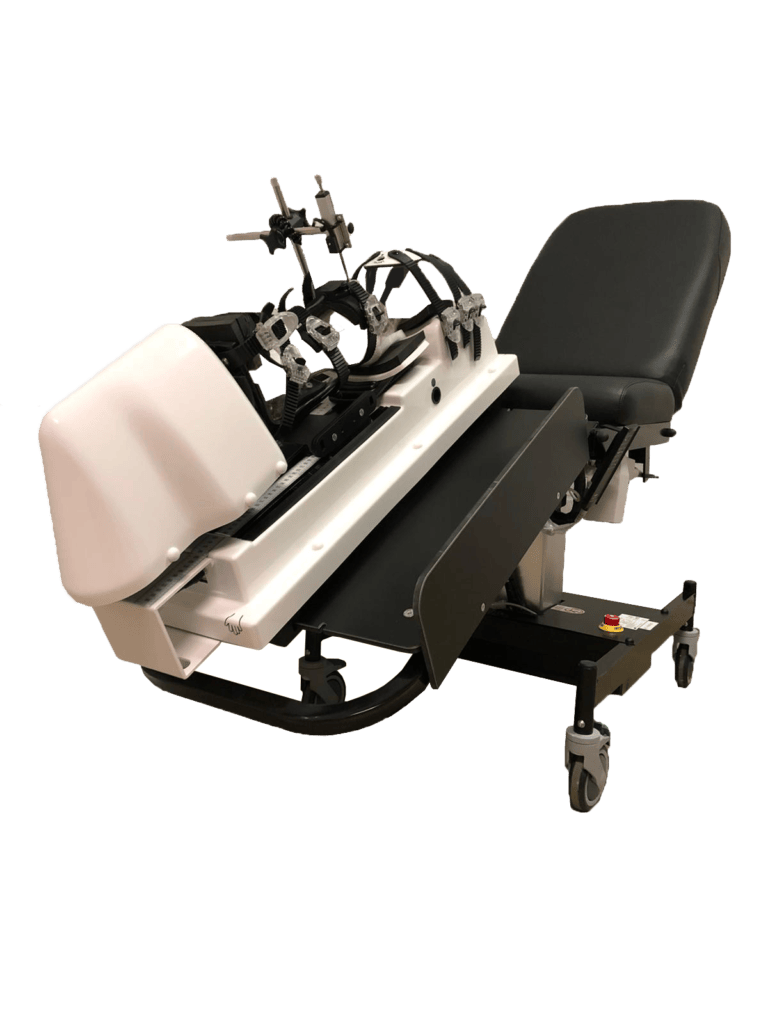
The GNRB arthrometer functions by exerting controlled pressure on the upper calf, allowing for the measurement of anterior tibial translation. Studies have shown its efficacy in accurately diagnosing complete ACL tears, with optimal pressure loads identified for reliable testing. The device’s capability to deliver accurate, reproducible measurements makes it a valuable tool in both diagnostic and post-surgical settings.
The Dyneelax arthrometer, a more recent development, similarly focuses on measuring knee laxity but also features rotation stability analysis. It offers enhanced sensitivity and repeatability, making it an effective instrument for both diagnosis and monitoring the progress of ACL rehabilitation.
4.2 Clinical Effectiveness and Benefits
Clinical studies and trials have demonstrated the practical benefits of these arthrometers. For example, the GNRB has been validated for its diagnostic value in complete ACL tears, showing high sensitivity and specificity at certain pressure loads. This precision is crucial for making informed decisions regarding treatment and rehabilitation.
Cojean’s 2023 study compared the GNRB and MRI in ACL injury detection, finding that while MRI struggled with detecting partial tears, the GNRB showed better sensitivity, highlighting its complementary role alongside MRI.
Jenny et al.’s 2017 study provided experimental validation for the GNRB, comparing its measurements of anterior tibial translation with the gold standard OrthoPilot®, further affirming its diagnostic accuracy.
Smith’s 2022 research emphasizes the clinical utility of the GNRB arthrometer, stating, “ACL laxity and stiffness measures were found to be reliably obtainable using the GNRB® knee arthrometer under the strict control of the individual’s alignment to the device and patellar pad forces. Reliable laxity and stiffness values may assist practitioners in clinical reasoning and the development of individualized ACL rehabilitation programs
Cojean’s 2023 study on the Dyneelax, a newer arthrometer, assessed its sensitivity, reproducibility, and repeatability. The Dyneelax can simultaneously evaluate tibial translation and rotation, offering a comprehensive view of knee laxity, crucial for accurate ACL diagnosis.
In rehabilitation settings, both arthrometers assist in monitoring recovery progress. They provide clinicians with objective data to gauge the effectiveness of treatment regimens and make necessary adjustments. This is particularly beneficial in post-surgical rehabilitation, where accurate assessment of graft stability and knee laxity is vital.
In the study by Semay et al. (2016), the GNRB was used to analyze tibiofemoral anterior laxity post-ACL surgery, revealing significant changes in laxity between 9 and 12 months postoperatively, which aids in making informed decisions about sports recovery.
Florian Forelli’s study (2023) emphasized the need for integrating ecological situations into return-to-play assessments post-ACL reconstruction. The data from arthrometers can be pivotal in these assessments, offering objective measures to supplement clinical analysis and field testing.
Nouveau et al. (2017) Study focused on how rehabilitation and daily stress post-ACL surgery influence the stiffness of the ligament graft over time, using the GNRB to provide objective measurements and precise follow-up.
These studies collectively highlight the importance of GNRB® and DYNEELAX® arthrometers in the management of ACL injuries. Their ability to provide precise and objective measurements is invaluable for diagnosis, treatment planning, and monitoring rehabilitation progress, making them indispensable in orthopedic and sports medicine practices.
5. Prevention and Awareness in ACL Injury Management
Preventing ACL injuries in sports involves a combination of effective strategies, education, and the use of advanced diagnostic tools like the GNRB and Dyneelax arthrometers.
5.1 Strategies for Prevention
Preventing ACL injuries involves a comprehensive approach that includes strength training, flexibility exercises, and proper technique training. Strength training, particularly for the muscles around the knee, provides crucial support and stability to the joint, reducing the risk of injury. Flexibility exercises are essential to maintain a full range of motion, helping athletes avoid injuries during high-demand movements. Technique training is critically important in sports that involve jumping, cutting, or pivoting movements, as proper form can significantly reduce the likelihood of knee strain.
5.2 Education and Awareness

The role of education and awareness in preventing ACL injuries is paramount. Athletes and coaches must be informed about the risks of ACL injuries, the importance of proper training techniques, and the symptoms of potential knee injuries. Educational programs and workshops can be instrumental in teaching athletes and coaches about injury prevention strategies, the importance of warm-up routines, and how to recognize early signs of knee distress.
5.3 Regular Assessments with Arthrometers
Regular assessments using advanced diagnostic tools like the GNRB and Dyneelax arthrometers play a vital role in the early detection and prevention of ACL injuries. These tools provide objective measurements of knee laxity and stability, allowing for the early identification of potential issues that could lead to injury. By integrating regular laxity assessments into routine check-ups, especially for athletes in high-risk sports, it is possible to detect subtle changes in the knee that might not yet be symptomatic but could indicate a risk for ACL injury.
These assessments are particularly beneficial during the pre-season or after any injury to ensure that the athlete’s knees are in optimal condition before engaging in high-impact activities. Moreover, the data obtained from these assessments can help tailor individualized training and conditioning programs to address specific needs or weaknesses, further reducing the risk of injury.
A holistic approach to ACL injury prevention, encompassing targeted training, heightened awareness, and regular assessments with tools like the GNRB and Dyneelax arthrometers, is essential for reducing the incidence of these injuries and promoting a culture of safety and health consciousness in sports.
Conclusion
Throughout this article, we’ve delved into the multifaceted aspects of ACL injuries in sports, from understanding their nature and identifying high-risk activities to exploring the latest advancements in treatment and prevention strategies. The key points emphasize the importance of a comprehensive approach to managing these injuries, which includes accurate diagnosis, effective treatment options, and proactive prevention measures.
Understanding ACL Injuries is crucial for athletes, coaches, and medical professionals alike. Recognizing the sports with a higher risk of ACL injuries and the common mechanisms behind these injuries sets the foundation for implementing preventive strategies and timely interventions. The discussion highlighted that sports such as football, basketball, skiing, and others require specific attention due to their demanding physical nature.
Treatment and Rehabilitation of ACL injuries have evolved significantly, with options ranging from non-surgical methods to advanced surgical procedures. The role of rehabilitation, which integrates strength training, flexibility exercises, and technique refinement, is indispensable in ensuring a full recovery and minimizing the risk of re-injury.
The article also stressed the importance of Prevention and Awareness. Educating athletes and coaches about injury risks, encouraging proper training methods, and incorporating regular assessments are vital components of an effective injury prevention program.
Lastly, the role of advanced diagnostic tools like the GNRB and Dyneelax arthrometers in sports medicine cannot be overstated. These tools have revolutionized the way ACL injuries are diagnosed and managed, providing precise measurements crucial for both pre- and post-treatment evaluations. Their integration into regular health assessments and rehabilitation processes significantly enhances the effectiveness of treatment plans and aids in the safe return of athletes to their sports.
In conclusion, the journey towards understanding, preventing, and effectively managing ACL injuries is ongoing. The continuous advancements in sports medicine, especially with tools like the GNRB and Dyneelax, underscore a future where these injuries can be more accurately diagnosed, effectively treated, and, most importantly, proactively prevented.
Medical References
Semay, B., Gaillard, R., Godeneche, A., & Neyret, P. (2016). Evolution of the Anteroposterior Laxity by GNRB at 6, 9, and 12 Months Post-Surgical Anterior Cruciate Ligament Reconstruction. Knee Surgery, Sports Traumatology, Arthroscopy (DOI: 10.1016/j.rehab.2016.07.045).
Nouveau, S., Robert, H., & Viel, E. (2017). ACL Grafts Compliance During Time: Influence of Early Solicitations on the Final Stiffness of the Graft After Surgery. Journal of Experimental Orthopaedics (DOI: 10.24966/ORP-2052/100035).
Smith, K. (2022). The Reliability of the GNRB Knee Arthrometer in Measuring ACL Stiffness and Laxity: Implications for Clinical Use and Clinical Trial Design. Journal of Orthopaedic Research (DOI: 10.26603/001c.38252).
Forelli, F. (2023). After Surgery Rehab Post Op. Journal of Sports Medicine (DOI: 10.26603/001c.73031).
Cojean, T. (2023). MRI vs GNRB in ACL Injuries Detection. The American Journal of Sports Medicine (DOI: 10.1016/j.knee.2023.03.017).
Cojean, T. (2023). Sensitivity, Repeatability, and Reproducibility Study with a Leg Prototype of a Recently Developed Knee Arthrometer Dyneelax. Journal of Biomechanics (DOI: 10.1016/j.medntd.2023.100254).
Jenny, J. Y. (2017). Experimental Validation of the GNRB for Measuring Anterior Tibial Translation. Knee Surgery, Sports Traumatology, Arthroscopy (DOI: 10.1016/j.otsr.2016.12.011).
Klouche, S., Lefevre, N., Cascua, S., Herman, S., Gerometta, A., & Bohu, Y. (2015). Diagnostic Value of the GNRB in Relation to Pressure Load for Complete ACL Tears: A Prospective Case-Control Study of 118 Subjects. Orthopaedics & Traumatology: Surgery & Research (DOI: 10.1016/j.otsr.2015.01.008).


